Sit for a spell on the bench and watch the water at Boonie Falls cascade over cypress knees. The natural falls are small at only 2-3 feet high but they sure are beautiful.
For a map and trailhead of the Florida Trail – Lockwood to Barr click
The species range extends as far north as Canada, along the prairies of the central region, down to Mexico. It can be found from the northern Gulf Coast to southern Florida, where they spend the winter (FWC 2003).
Sit for a spell on the bench and watch the water at Boonie Falls cascade over cypress knees. The natural falls are small at only 2-3 feet high but they sure are beautiful.
For a map and trailhead of the Florida Trail – Lockwood to Barr click
Weedon Island Preserve is a natural and cultural gem in St Petersburg on Tampa Bay. Comprised mostly of marine aquatic and coastal ecosystems, with a few upland exceptions. It is home to many native plants and animals, a rich cultural history, and an educational facility. The native peoples lived at this site for thousands of years. Much of the preserve contains mosquito ditches constructed in the 1950s. These ditches help connect sitting pools of water to larger bodies, allowing predatory fish to feed off mosquito larvae rather than use pesticides in the area. Currently, the Preserve preserves this land’s unique natural and diverse cultural heritages. This can be found in the Educational Center and the preserve. Today, Weedon Island Preserve is set aside as a 3,190-acre natural area managed by Pinellas County.
The largest estuarine preserve in Pinellas County is well known for its birding and fishing. The preserve provides over 4.5 miles of nature trails for hiking, 2 miles of boardwalks and paved trails that are ADA accessible, and the remaining 2.7 miles are natural trail loops. At the end of the Tower Trail sits the observation tower and at 45-foot-tall, it is the tallest of its kind in Pinellas County. You can see most of the preserve, Tampa, and St Petersburg if the conditions are right!
If you are tired of walking on land and want to spend time on the water, you are in luck! Weedon Island also includes a 4-mile, self-guided canoeing/kayaking loop called the South Paddling Trail. Meandering through mangrove tunnels and out to the bay. If you don’t have your own vessel, no worries; a company on site provides tours that take you through the maze of mangrove tunnels. Other activities include fishing from the pier, a boat launch at the end of the road, and picnicking at any designated picnic tables provided through the park and trails.
Don’t forget to check the Weedon Island Preserve Cultural and Natural History Center to learn about the natural history of the ancient native inhabitants of the area. Check the schedule of events because not only does Pinellas County sponsor events, UF/IFAS Extension agents also provide a wide variety of educational programs and events for the general public that are family-friendly and often free of charge. Monthly programs may include guided hikes, archaeology classes, speaker series, photography or birding meet-ups, and environmental sustainability workshops.
Amenities:
Educational Center
Wildlife Viewing
Lookout Tower
Information Kiosk
Guided Tours and Trails
Exhibits
Fishing Pier
Paddling Launch and Rentals
Parking Area
Restrooms
Interpretive Signage
Nature Trails, sand
Picnic Area
Seating Area, Pavilion
Bathrooms
Learning Center
Address: 1800 Weedon Drive Northeast, St. Petersburg, Florida 33702
For more information: http://www.weedonislandpreserve.org/
Photo Credit: Aymee Laurain
Author and Photo Credit: Bobby Putnam 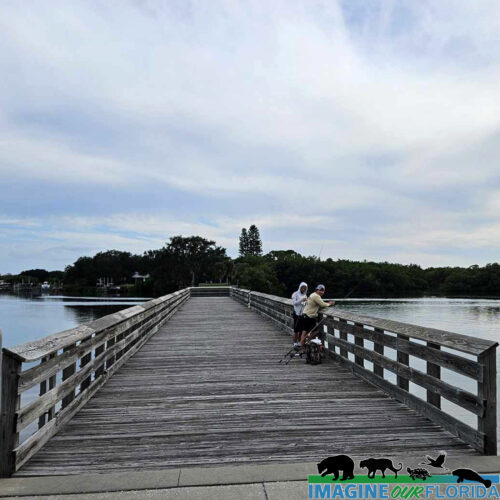
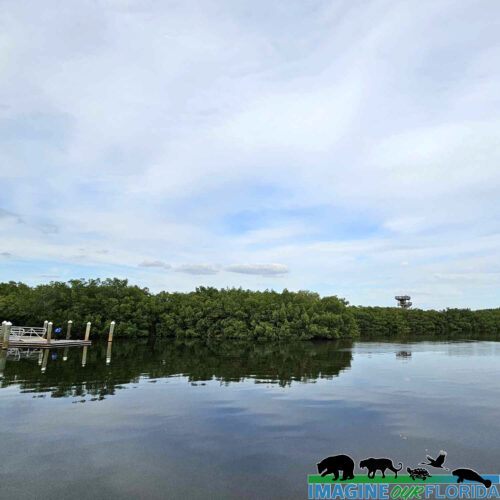
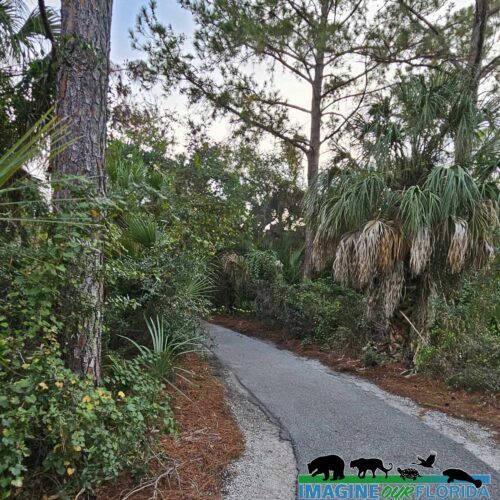
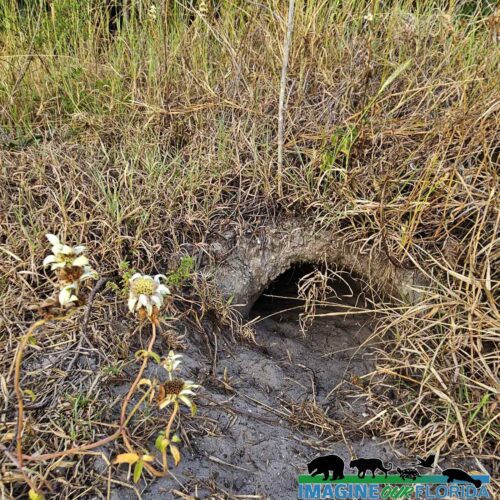
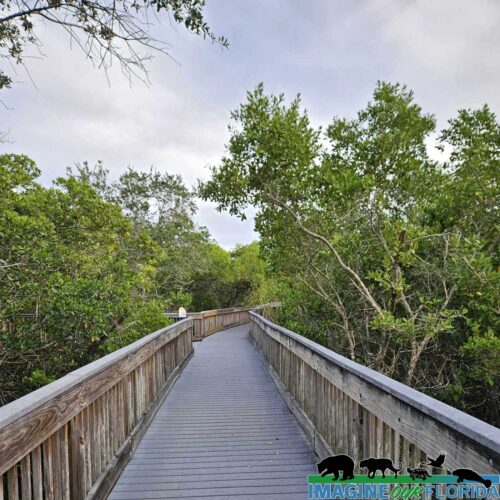
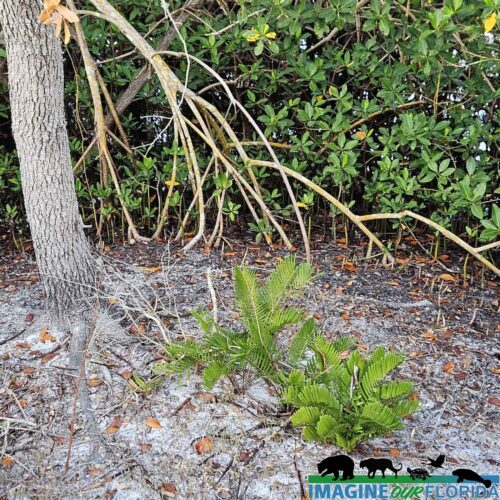
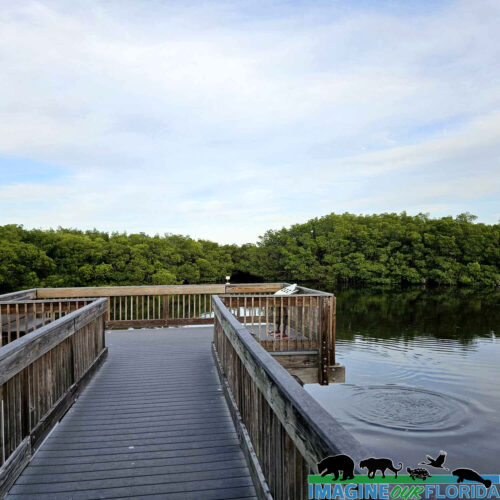
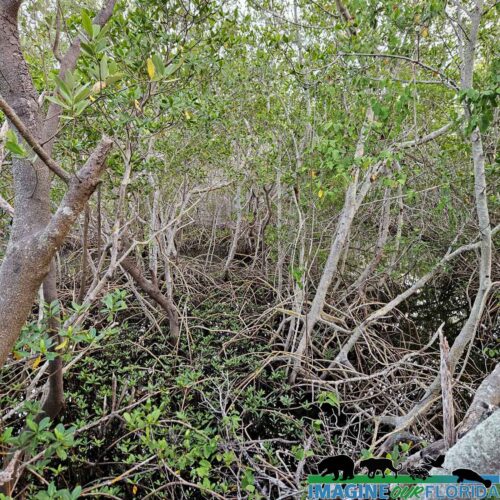
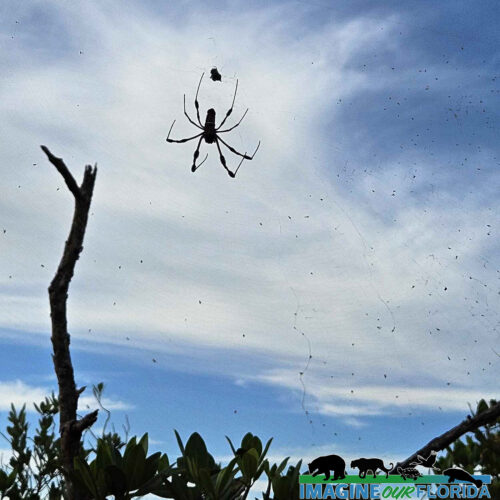
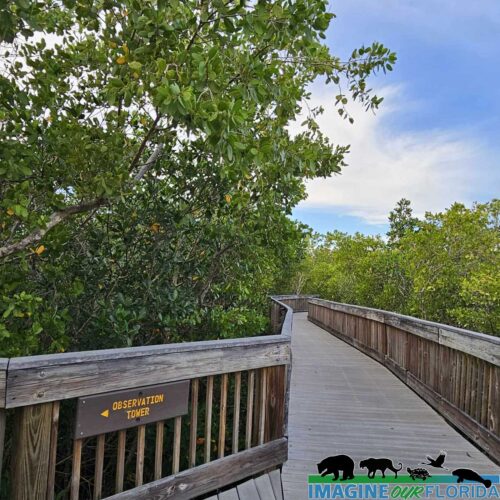
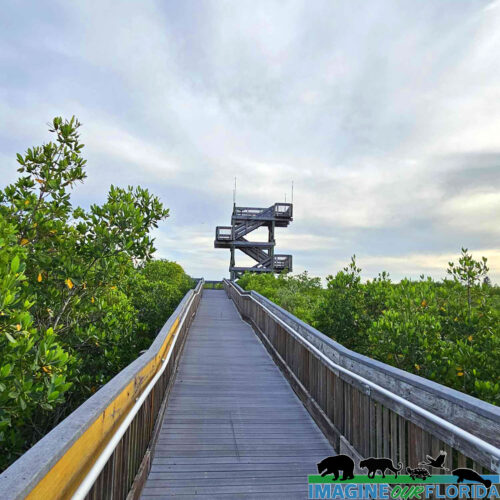
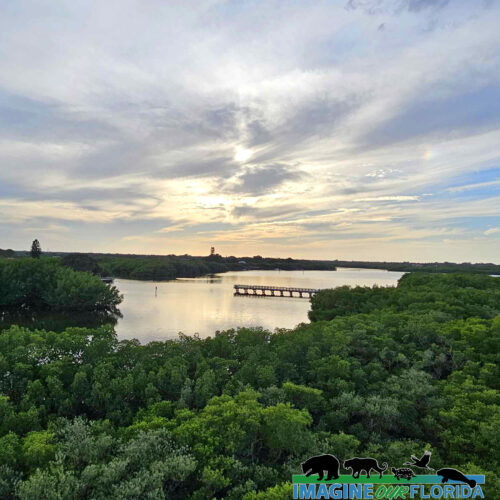
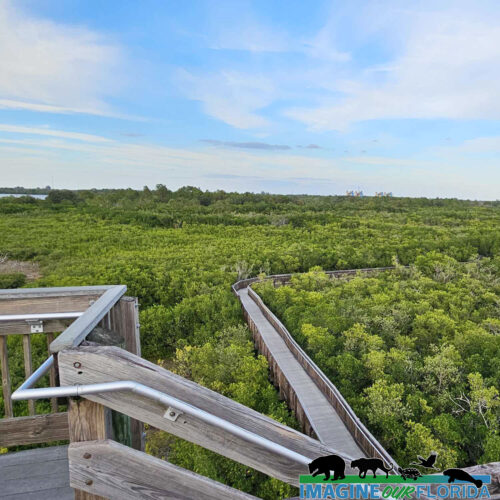
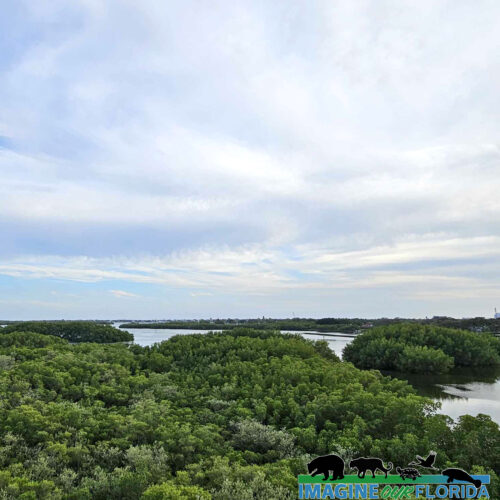
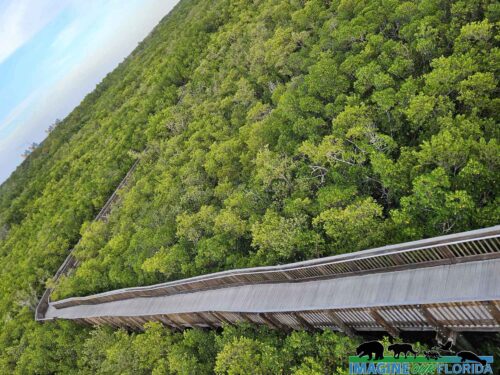
Great Blue Herons, Ardea herodias, are one of the most recognizable birds in Florida. The heron’s height and beautiful blue-gray plumage are hard to miss. They can reach 54 inches from head to tail, have a wingspan up to 75 inches, but weigh a mere 5-6 pounds.
You will most often find a Great Blue Heron standing alone at the water’s edge in saltwater or freshwater habitats. Fish, turtles, frogs, insects, birds, and rodents that pass within the area of the heron’s long neck are quickly snatched up by its powerful, long beak. Herons will also forage in fields or grasslands for frogs, birds, and small rodents.
During the breeding season, Great Blue Herons and their mates become part of a breeding colony that can include hundreds of pairs. Breeding colonies of Great Blue Herons are most often found in trees that are within 2-4 miles of their feeding areas. They may also be seen in mangroves, bushes, or on the ground. Males court females who lay 2-6 eggs. The couple shares the responsibility of incubating the eggs for up to a month and feeding the hatchlings for up to 3 months.
While Great Blue Heron’s remain mostly monogamous and enjoy the protection of the colony during the breeding season, for the rest of the year, they are solitary birds and will aggressively defend their feeding territory.
Photo Credit: Dan Kon and Andy Waldo
The Yellow-bellied Sapsucker, Sphyrapicus varius, is the only North American woodpecker that is fully migratory. They live and breed in North-eastern U.S. and Canada and spend their winters between the southern US and Central America. The male has a red throat as pictured here while the female’s throat is white.
From December – March, you may notice a line of holes in the trees and large shrubs in your garden. A Yellow-bellied Sapsucker has made sapwells where the sap of the tree can be harvested. Bats and other birds may visit the sapwells too. The holes produce no damage to the trees. The woodpecker’s favorite shrubs and trees include Viburnum, Waxmyrtle, Dahoon Holly, Live Oak, and Pine.
Yellow-crowned Night-Herons, Nyctanassa violacea, with their purplish-gray body, black-and-white face, and striking yellow plumes can be found in wet fields or shallow wetlands. They may be seen foraging any time during the day or night. You will most often discover this bird alone, although, at times, they may appear in groups.
Watch as they stand still or walk slowly with their necks extended in search of their favorite dinner of crustaceans. They may also eat frogs, small fish mussels, and water beetles.
Keep a keen eye out for this hard-to-find bird. While they are most common in barrier islands, coastal marshes, and mangroves, you may also find them inland near rivers, on golf courses, or even in your wet yard.
Yellow-crowned Night-Herons have been around for a long time. The oldest recorded fossil was discovered in Sarasota, Florida, and is 2–2.5 million years old.
Sadly, the Yellow-crowned Night-Heron has been designated a Species of Concern by Florida Rare and Endangered Plants and Animals.
Least Tern
I was able to get out today and visit a Least Tern Colony. Watching these amazing parents nesting, sitting on eggs, and caring for their newborn chicks is very interesting indeed. They actively defend their nesting areas and will let you know if you get too close in short order! They will scream and dive at you even pecking you in the head should you not pay heed to their warnings!
The Least Tern is Florida’s smallest Tern. It’s a spring/summer visitor. They are often seen flying low over the water, with quick deep wingbeats and shrill cries. These Terns usually hover before plunging into water for tiny prey and do more hovering than most terns. Populations are endangered in many areas because of human impacts on nesting areas, especially competition for use of beaches. Least Terns are listed as Threatened in the State of Florida.
For Tern parents, it’s tough raising chicks on a beach with development, people, dogs, feral cats, raccoons, fox, predatory birds, and broiling hot sun. Least Terns in some parts of the east including Florida are now nesting successfully on gravel roofs near the coast. This particular colony is the only known beach-nesting colony in SE Florida. The parents need to protect the chicks and feed them constantly while getting enough nutrition for themselves. Least Terns are great providers and amazing parents! ~Paul Waller
Note: All shots were taken from a responsible distance with a long lens
Photo credit: Paul Waller
BioLab Road at Merritt Island National Wildlife Refuge.
Take a slow 5.6-mile drive in the comfort of your car on Bio Lab Road in Merritt Island National Wildlife Refuge. It is a one-way road running north to south. With wetlands to your right and the water to your left, you are sure to see plenty of shorebirds. Look for ducks, ibises, egrets, sandpipers, spoonbills, pelicans, herons, and of course, alligators. Be sure to bring your camera and binoculars.
In 1962, NASA purchased 140,000 acres of land located adjacent to Cape Canaveral. The John F. Kennedy Space Center was built complete with launch pads. In 1963, U.S. Fish and Wildlife Service (USFW) and NASA entered into an Interagency Agreement. This agreement allowed USFW to establish the land that was unused by NASA as the Merrit Island National Wildlife Refuge.
Established to provide habitat for wildlife diversity, migratory birds, and endangered and threatened species, Merrit Island National Wildlife Refuge consists of scrub, pine flatwoods, hardwood hammocks, saltwater marshes, freshwater impoundments, and coastal dunes. Over 1,500 species of plants and animals including 15 federally listed species make their homes here.
Watch for bobcats, otters, and deer. Lizards, snakes, alligators, and turtles make their homes here. 358 species of birds have been recorded at the refuge. Birds of prey include bald eagles, osprey, red-shouldered hawks, and American kestrels. Look for killdeer, Wilson’s snipes, and ring-billed gulls along the shore. Look up to see blue jays, barn swallows, American robins, pine warblers, and more. Blue herons, ibis, and egrets are plentiful. Ring-necked ducks, blue-winged teals, and wood ducks can be seen swimming in the waters at the refuge. Threatened and endangered species such as the eastern indigo snake, scrub-jay, gopher tortoise, wood stork, West Indian Manatee, and Southeastern Beach Mouse find refuge here.
For more information click here: https://www.fws.gov/refuge/Merritt_Island/
Photo credit: David Gale
– Mullet Lake Park-
Located in Geneva in Seminole County, Mullet Lake Park is best known for its 8 primitive camping sites, its group camping site, and boat launches. The 55-acre park borders Lake Mullet and the St Johns River. This quaint park offers the opportunity to sit and relax under ancient oak trees as you take in the sights and sounds at this remote location.
Listen for the sounds of birds, fish jumping, and frogs croaking. Look for birds of prey, shorebirds, and a variety of blooming wildflowers waiting to be admired.
For more information click here: https://www.seminolecountyfl.gov/…/301554-Mullet-Lake-Park.…
Photo credit: Dan Kon
Black-necked stilts, Himantopus mexicanus, are often seen wading in shallow water in search of food such as small crustaceans, amphibians, and small fish. They also enjoy larva, dragonflies, and beetles as well as a few plants and seeds. Look for these unmistakable birds with long, pink legs in wetlands, flooded fields, shallow lakes and ponds, and saltmarshes.
The female chooses the male for mating and together they select a nest site and build the nest. Black-necked stilt nests are located on tiny islands, on floating masses of vegetation, or on the ground near the water. One will dig a hole with its feet and body. A lining of grasses, shells, stones, and other materials are added for 2 – 5 eggs. The couple will both incubate the eggs for nearly a month and raise the chicks until they are ready to be on their own in about a month after hatching.
When Black-necked stilts feel threatened by humans or other animals they will perform a “Popcorn Display.” A group of them will join together and jump up and down while flapping their wings and making loud sounds. They may also use a distraction tactic to lure predators away from their nests.
These beautiful birds face human threats of pesticide run-off and habitat loss. When birdwatching, stay far enough away so you do not disturb them.
Photo credit: Dan Kon
Little Big Econ State Forest
Whether for a day or a week, there is plenty to explore and discover at the Little Big Econ State Forest.
For trail maps and more information:
https://www.fdacs.gov/…/State-…/Little-Big-Econ-State-Forest
Photo credit: Christian Kon
If you have been to a beach in Florida, you have surely heard the distinct call of the laughing gull. Laughing gulls (Leucophaeus atricilla) are year-round Florida residents and are often seen in flocks on beaches, in salt marshes, and nearby parking lots. They are often seen inland in fields, near rivers, or at your local garbage dump.
Both males and females build nests in colonies on the ground under the cover of bushes or grasses. The parents take turns incubating the eggs for about 20 days and both feed the young for the next 5 weeks. Food includes foraged crustaceans, small fish, and insects. In the spring, horseshoe crab eggs and the eggs of other birds provide a tasty meal. Earthworms and snails are sometimes eaten. These birds are not picky eaters so be sure to carefully dispose of your food scraps and food wrappers.
Snail Kites can be found flying low over open freshwater and marshes in Central and Southern Florida before dropping down to snatch an apple snail with their talons. They will fly to a perch and use their unique-shaped bills to pry the snails from their shells. Look for Snail Kites roosting in flocks just before hunting and during nesting season.
Listed as endangered in Florida since 1967, Snail Kites (Rostrhamus sociabilis) depend on good quality water to survive. Urban development, sewage seepage, nutrient and pesticide run-off, and invasive plants have degraded much of Florida’s freshwater. Nearly 1/2 of the Everglades have been drained. Since a Snail Kite’s diet consists almost exclusively of apple snails that only live in freshwater areas, it is imperative that we protect the remaining wetlands.
Black-bellied Whistling-Duck
Once known as Tree Ducks, the striking Black-bellied Whistling-Ducks, (Dendrocygna autumnalis), are often seen in flocks, sometimes with up to 1000 birds. They can be spotted perching on fences, electric lines, or in Spanish Moss.
Look for Black-bellied Whistling-Ducks near freshwater in areas such as marshes, lagoons, and swamps. They prefer areas with trees and thick vegetation. You may find a flock foraging in a field, mangroves, freshwater ponds or lakes, or your yard. Their diets consist of mostly plants such as grasses, wetland plants, and sedges, as well as agricultural crops such as corn. Snacks include spiders, leeches, beetles, and snails.
Pairs form life-long bonds in the winter. Together, they will select a tree cavity for the nest. The female will lay 9-18 eggs on the debris in the cavity. She may also lay her eggs in the nest of another whistling duck. The incubation period lasts for 25-30 days and the nestling period for 10-13 days. Hatchlings are nearly independent at birth.
As year-round residents of Florida, Black-bellied Whistling-Ducks are rapidly expanding their breeding range northward. Once considered non-migratory, both the northern-most and southern-most populations are now migratory.
Trimble Park —
Nestled between Lake Beauclair and Lake Carlton on the Harris Chain of Lakes lies an outdoor paradise. Trimble Park, operated by Orange County, is located near Mt. Dora in Tangerine.
Saunter along the 1.2-mile loop trail surrounded by ancient oaks. The trail runs along the perimeter of the 71-acre park. Wind through forests of pine, oak, and cypress trees. Walk on a boardwalk through the wetlands. Pause near the lakes to enjoy the view and the wildlife who make their homes there. There are plenty of benches to rest on for your wildlife viewing pleasure. Much of the trail is shaded. Bring your lunch and enjoy it at one of the many picnic tables, some of which are under a shaded structure.
Camping sites are available for your tent or RV. Launch your boat, canoe, or kayak from the boat dock. There are playgrounds for your kids. Your dogs on a 6-ft leash are welcome too!
For more information: http://orangecountyfl.net/CultureParks/Parks.aspx…
Park map and more: https://www.ocfl.net/…/Camping%20at%20Orange%20County%20Par…
Yellow-headed Blackbird visits Florida
While the yellow-headed blackbird (Xanthocephalus xanthocephalus) may be a common resident of the western United States, it is a rare visitor to Florida. This male is one such individual that migrated just a little too far east. Every year, a small handful of individuals can be seen in random locations throughout Florida, usually in the Fall and winter months.
Similar to the more commonly known red wing blackbird, the yellow-headed blackbird occupies marshes and open fields where it searches for seeds and small insects to eat. Being larger and more dominant than the smaller red wing blackbirds, yellow-heads often occupy the best nesting grounds in the marshes that they share. A single male can maintain a territory with up to 8 females to nest with. He will often share in the nesting duties but seldom feeds the young other than those in the first nest created. The nests average 4 eggs each and they typically lay one clutch of eggs per year.
Apart from the bright yellow heads of the adult males (as seen in the photos), yellow-headed blackbirds can also be identified by the bright white wing patches most easily seen when in flight. They are also known as having a rather unpleasant call for a songbird, sounding much like a rusty hinge squeaking.
So, remember, always keep your eyes open. You never know what neat visitor you may run into.
Photo credit: Andy Waldo
Map: Cornell Lab
Yellow-rumped Warbler
Known affectionately as Butter-Butts, Yellow-rumped warblers, (Setophaga coronata), migrate south in the winter. These flocks of Florida snowbirds can be found in mangroves, scrub, forests, or your yard.
Their winter diet consists of fruit from shrubs such as wax myrtle, juniper berries, poison ivy, and poison oak as well as many seeds including those from goldenrod and beach grasses.
Merlins, Falco columbarius, are stocky, strong falcons. This bird of prey was found wintering at Lake Apopka Wildlife Drive. Merlins have an average flight speed of 30 miles per hour.
Merlins spend their summers in northern North America where they breed in open areas near rivers and lakes. Some have taken over crow’s nests in residential areas.
Their favorite foods are a variety of small to medium-sized birds. They enjoy House Sparrows and Least Sandpipers. Watch for Merlins to mount a high-speed attack where they will catch a bird in midair. Merlins also dine on dragonflies, bats, rodents, reptiles, and nesting birds.
The Merlin population significantly declined in the 1960s from pesticides. With reduced pesticide use, their population has stabilized. Loss of habitat is also a concern but Merlins have adapted by taking up residence in human neighborhoods.
Great Crested Flycatcher (Myiarchus crinitus)
These beautiful birds tend to make homes in deciduous forests but can also settle in your backyard. Once they establish a nest, they rarely move. Both parents care for the nest and will leave in search of insects. They are excellent hunters, moving quickly and picking off insects on the ground or even in flight.
Great Crested Flycatchers have also been known to bring snake skins back to their nest. Occasionally, they may mistake plastic for snakes’ skins. Males defend their nest with loud calls and will even fight when threatened. Breeding takes place throughout the U.S. and southern parts of Canada in spring and summer. During non-breeding seasons, from fall through winter, Great Crested Flycatchers migrate to Central or South America.
Photo Credit ~ Aymee Laurain
Econ River Wilderness Area
Purchased by Seminole County in 1994, the 240-acre Econ River Wilderness Area is located south of Oviedo on the west side of the Econlockhatchee River.
Explore 3 miles of trails including the 2.2-mile Main Loop Trail and the 1/2-mile Flatwoods Loop Trail. Saunter through pine flatwoods, sandhill, oak hammocks, and river swamp habitats. Rest on one of the benches at the river.
Discover gopher tortoises, great horned owls, northern bobwhites, golden mice,
raccoons, fox squirrels, white-tailed deer, bobcats, river otters, and more who make their homes in the wilderness area.
Put on your hiking shoes, bring your horse or bike, your dog on a leash, and enjoy your day in the wilderness from sunrise to sunset. Join the nearly 40,000 people who visit the Econ River Wilderness Area each year. Don’t forget your camera.
For more information: http://www.seminolecountyfl.gov/…/Econ-River-Wilderness-Are…
Photo Credit – David Gale
Reddish Egrets, (Egretta rufescens), can be found running and jumping in the shallow saltwater of Florida coasts. Estuaries, lagoons, and waters near mangroves provide a variety of small fish that are brought to the surface by the egret’s intricate dance of jumps, spins, and footwork with wings of 46-48 inches spread open.
A dark Reddish Egret is pictured here. You may also discover a white morph that has a mostly white body. They both have a black-tipped pink bill and blue feet and legs.
Reddish Egrets breed in mainland Florida between February and June. Breeding in the Keys and Florida Bay occurs from November to May. Both the male and female incubate three to four eggs for 26 days. The young leave the nest within 45-49 days after hatching.
Plume trading nearly wiped out the Reddish Egrets. The Reddish Egret is currently State designated as Threatened and is protected by the U.S. Migratory
Bird Treaty Act.
Today, the Reddish Egret population may be in decline once again. Development, degradation of habitat, loss of genetic diversity, human disturbance, and predators are cause for concern.
You can be their voice. Advocate for clean water and the protection of land where Reddish Egrets call home. Respect their right to share our state with us. Give them space, observe from afar, and be mindful of where you hike, boat, and play.
American White Pelicans (Pelecanus erythrorhynchos), arrive in flocks soaring through the Florida sky in a V formation. With their snowy white bodies, yellowish-orange bills, orange legs, and black-tipped wings that span up to nine and a half feet, they are truly a sight to behold.
White Pelicans breed in the northwestern United States and in western Canada. Many choose to spend their winters near Florida’s coastlines and in its wetlands.
American White Pelicans (Pelecanus erythrorhynchos) spend the summer months in colonies In Canada and Northwestern United States, where they breed and raise their young on lakes.
Before winter, flocks of white pelicans soar into Florida by flying high in a V formation. One of North America’s largest birds, a white pelican, is hard to miss with its wingspan of up to 9 1/2 feet. Black wingtips and pink or reddish-orange legs, feet, and bills make this bird a must-see.
Look for white pelicans on coastal waters, bays, estuaries, and inland waterways. Their nests, consisting of sticks and dirt, can be found on the ground. Watch as these graceful birds float on the surface of the water and dip their heads to scoop up a fish dinner. You will often find several of them together as they participate in a group effort to herd fish into a buffet for all.
White Pelicans are often spotted fishing with Double-Crested Cormorants. You may see a hungry White pelican steal a fish from another pelican or a cormorant.
Plan a trip to one of Florida’s coasts. Explore the shoreline and the wetlands. Take some time to sit back and discover the group’s camaraderie as well as the stealthy antics of a few individuals.
We can all work together to ensure these vulnerable beauties are here for our next generations to enjoy by eliminating pesticides and cleaning up litter, including monofilament lines.
Recent Comments